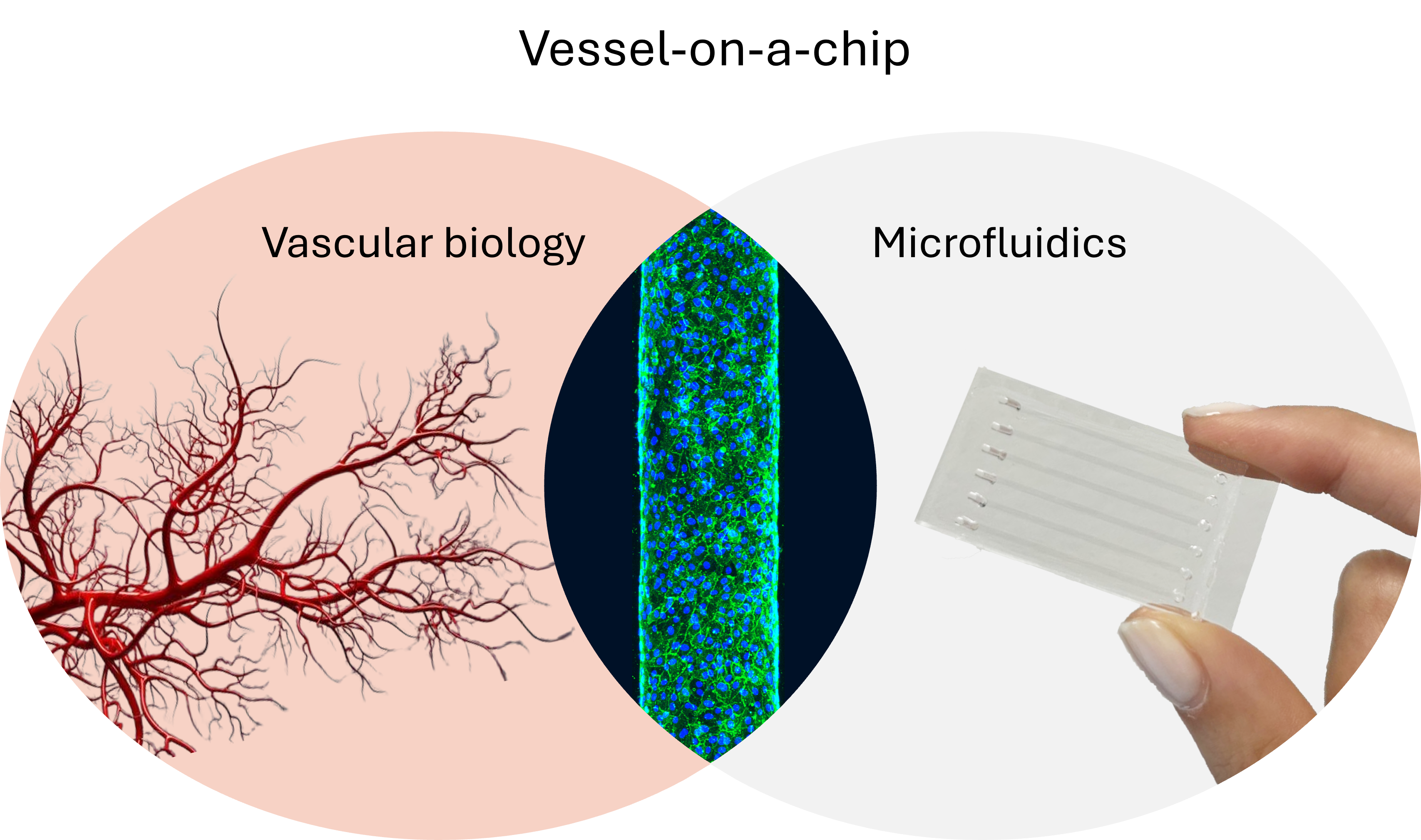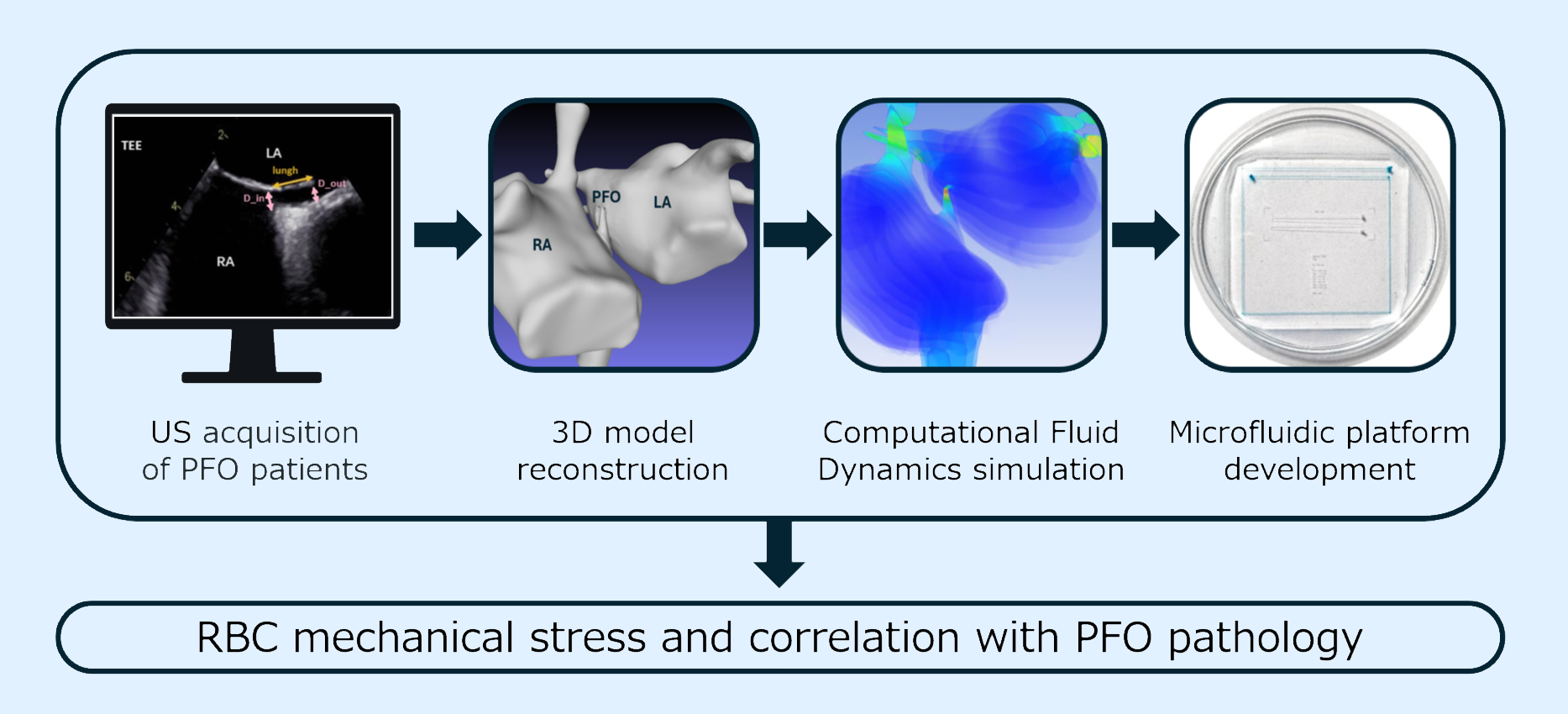
Research Projects
INNOVA: Italian network of excellence for advanced diagnosis

Funded by: Italian Ministry of Health
Funding period: 2023-2027
Grant number: PNC-E3-2022-23683266
Partners:
- Fondazione IRCCS Ca’ Granda Ospedale Maggiore Policlinico, Milano, Italy
The Innova project is part of the PNRR-PNC initiative, aiming to support the scientific community by interfacing with clinical and industrial entities in the Life Sciences. It focuses on translational research and innovation for major human diseases by providing innovative diagnostic approaches across Italy.
In collaboration with Ospedale Maggiore Policlinico and other centers in Italy, our team is part of WP 1, which investigates microvascular dysfunction of specific organs. Specifically, our work aims to develop and employ a microfluidic platform for studying microcirculation disorders. By integrating advanced technology and innovative research methods, the platform enables the modeling and analysis of microcirculatory conditions in different pathologies, highlighting relevant biomarkers for disease diagnostics and identifying common pathways. This tool is designed to facilitate a deeper understanding of these disorders, leading to improved diagnostic and therapeutic approaches.
Migraine with aura and causal or incidental patent forame ovale (PFO): identification of biomarker(s) to select patients who would most benefit from PFO closure. The MANET study

Funded by: Italian Ministry of Health
Funding period: 2022-2024
Grant number: PNRR-MAD-2022-12376277
Partners:
- Centro Cardiologico S.P.A. Fondazione Monzino
- IRCCS Policlinico San Donato
- Università di Cagliari
- Azienda Ospedaliera Universitaria “Federico II”
Migraine with aura (MHA) is a neurological disease associated with a multifactorial etiology and a prevalence of 12-15% in the general population. Several studies have described a strong relationship between migraine, and especially MHA and patent foramen ovale (PFO). This project aims to identify biomarkers able to discriminate migraineurs with PFO-related symptoms from those with incidental PFOs looking for distinctive features at the cellular/molecular levels. To this end, we are developing a microfluidic platform based on computational hemodynamic simulations to evaluate blood cell activation in the specific mechanical environment of the PFO, i.e. by stimulating endothelium and blood cells with the specific shear stress profiles experienced during passage through the PFO.
Spontaneous Platelet Aggregation as a marker of platelet hyper-reactivity: functional characterization in a case-control study of patients with coronary artery disease and control subjects

Funded by: Italian Ministry of Health
Funding period: 2019-2024
Grant number: RF-2018-12367710
Partners:
- Regione Lombardia – Direzione Generale Sanità: ASST Santi Paolo e Carlo Medicina II, Presidio San Paolo
The project aims to assess whether platelet hyper-reactivity, measured as the ability of platelets to spontaneously aggregate, is a clinically relevant phenomenon and increases the risk of Acute Coronary Syndrome (ACS) both in patients with stabilized coronary artery disease and in healthy individuals. This could be useful in clinical practice to help personalize and choose the most appropriate medical intervention for each patient and to develop antithrombotic drugs with a better risk/benefit ratio than those currently used for myocardial infarction prevention.
For this project, our team has developed a microfluidic platform to study thrombus formation under different flow conditions. This platform allows us to test whether platelets that undergo spontaneous platelet aggregation (SPA) are more prone to forming thrombi under experimental conditions that closely mimic in vivo physiological conditions.